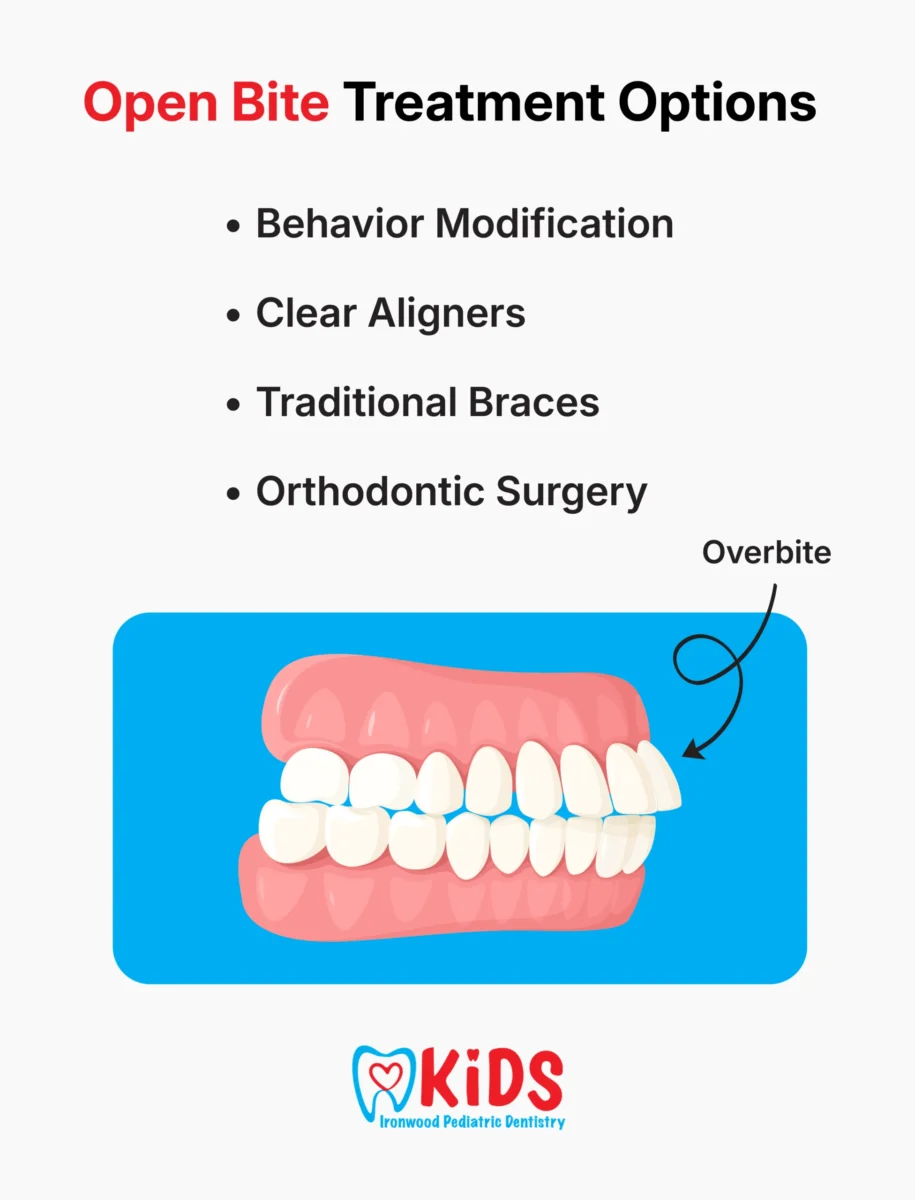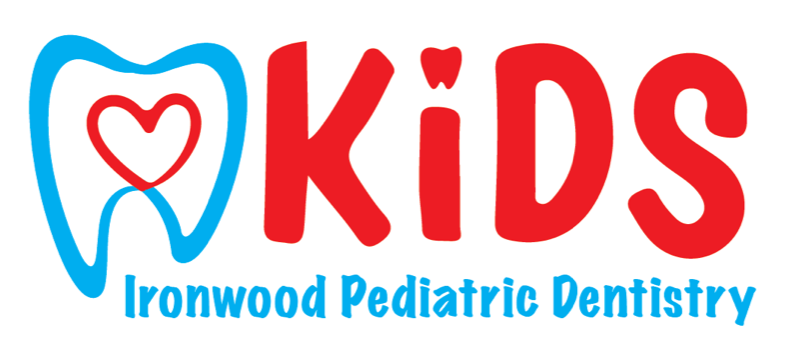An open bite is a form of tooth and jaw position misalignment that dentists and orthodontists call a malocclusion. Although an open bite can affect the back teeth of your child’s mouth, a condition known as posterior open bite, most people know the condition better when it affects the front teeth, or anterior teeth open bite.
As opposed to other malocclusion conditions, like crossbite or underbite, an anterior open bite malocclusion leaves little confusion in its name: it results in a visible gap between the upper and lower teeth.
In this post, we discuss what causes an open bite condition, and more importantl,y how to treat it.
If your child has an open bite and you would like to correct it, call Ironwood Pediatric Dentistry at (480) 422-4544.
Why Treat an Open Bite?
For many children, the most concerning effects of an overbite condition are a crooked smile, trouble eating foods like pizza or spaghetti because the front teeth cannot cut food properly, sometimes trouble talking clearly because of a lisp or other speech impediment, and mouth breathing.
All of these symptoms can lead to feelings of awkwardness that can make it harder to socialize.
Open bites can do more than cause embarrassment, though. They can lead to a number of symptoms that have significant implications, including health problems beyond oral health like:
- Chronic jaw pain
- Trouble thoroughly chewing food, which in turn can contribute to digestive problems
- Uneven tooth enamel wear, which can lead to higher risks of tooth decay and even to cracked or chipped teeth
So, there are practical as well as aesthetic concerns with an open bite that make leaving it alone not the best answer. Open bites generally do not self-correct over time and can continue to worsen with age.
Causes of Open Bite
There are four general ways that an open bite occurs.
- One is inherited or genetic factors that you have no control over, like skeletal open bite problems that cause jaw growth to move the jaws apart instead of together.
- A second is trauma, like an injury to the face or jaw, or missing teeth, which you may not be able to prevent, but is treatable.
- A third is Temporomandibular joint disorder (TMD or TMJ for short). This can have causes like tooth grinding or an injury.
- A fourth is bad oral health habits. This can include thumb sucking (or digital sucking as dentists call it), bottle feeding or pacifier sucking for too long, or tongue thrusting, which happens when instead of pressing the tongue up to the roof of the mouth when swallowing your child pushes it forward against the front teeth instead.
Open Bite Treatment Options
The good news about open bite conditions is that they are treatable using orthodontic treatment options, including traditional braces, clear aligners like Invisalign, or even in the most severe open bite cases, through orthodontic surgical procedures.
The best treatment method for your child depends on the nature of the open bite condition.
As with other kinds of misaligned teeth, an open bite is usually diagnosed through routine dental exams. Your child’s dentist will examine his or her teeth and may perform dental X-rays to determine if the teeth are properly aligned. Dentists and orthodontists usually classify open bites as mild, moderate, or severe cases.
Treatment options for open bites range from encouragement to change bad oral habits up to orthodontic surgical procedures.

Behavior Modification
Sometimes correcting a mild case of open bite is as simple as stopping and discouraging behaviors that contribute to it. For example, putting a timely end to bottle feeding and pacifier use, and encouraging your child to put an end to any finger sucking habits.
Invisalign
In mild to moderate cases, Invisalign is an effective solution to an open bite that offers advantages that traditional braces cannot.
Clear aligners are virtually invisible when worn. They are easily removable, so no dietary restrictions are needed when using them as treatment. Compared to braces, they make it easier to practice good oral hygiene with tooth brushing and flossing. In many cases, the clear aligner treatment process is cost-competitive with metal braces treatment.
Traditional Braces
Traditional braces, and related alternatives like ceramic braces and lingual braces, are highly effective in treating most kinds of open bite that do not require surgery. They are also cost effective, being in most cases where orthodontics are required, the least expensive option.
Orthodontic Surgery
As you may imagine, jaw surgery, also known as orthognathic surgery, is reserved for the most severe cases of open bite treatment, such as to reposition the upper jaw with plates and screws. Typically, your child’s orthodontist will coordinate with an oral surgeon to perform this procedure.
Learn More About Orthodontic Treatment Options for Open Bites
Dental open bite conditions are common forms of malocclusion in children and are treatable, no matter what your household’s financial situation may be. There is no reason why your child should have to endure the feelings of awkwardness or the physical consequences of an untreated open bite.
At Ironwood Pediatric Dentistry, our child orthodontic specialists are experienced in treating all kinds of open bite cases, from mild to severe cases. We offer the full range of orthodontics to treat our open bite patients, including Invisalign aligner treatment.
If you are unsure whether your child has an open bite or want to know more about the possible treatment options, just give us a call at (480) 422-4544 or use our contact form.
